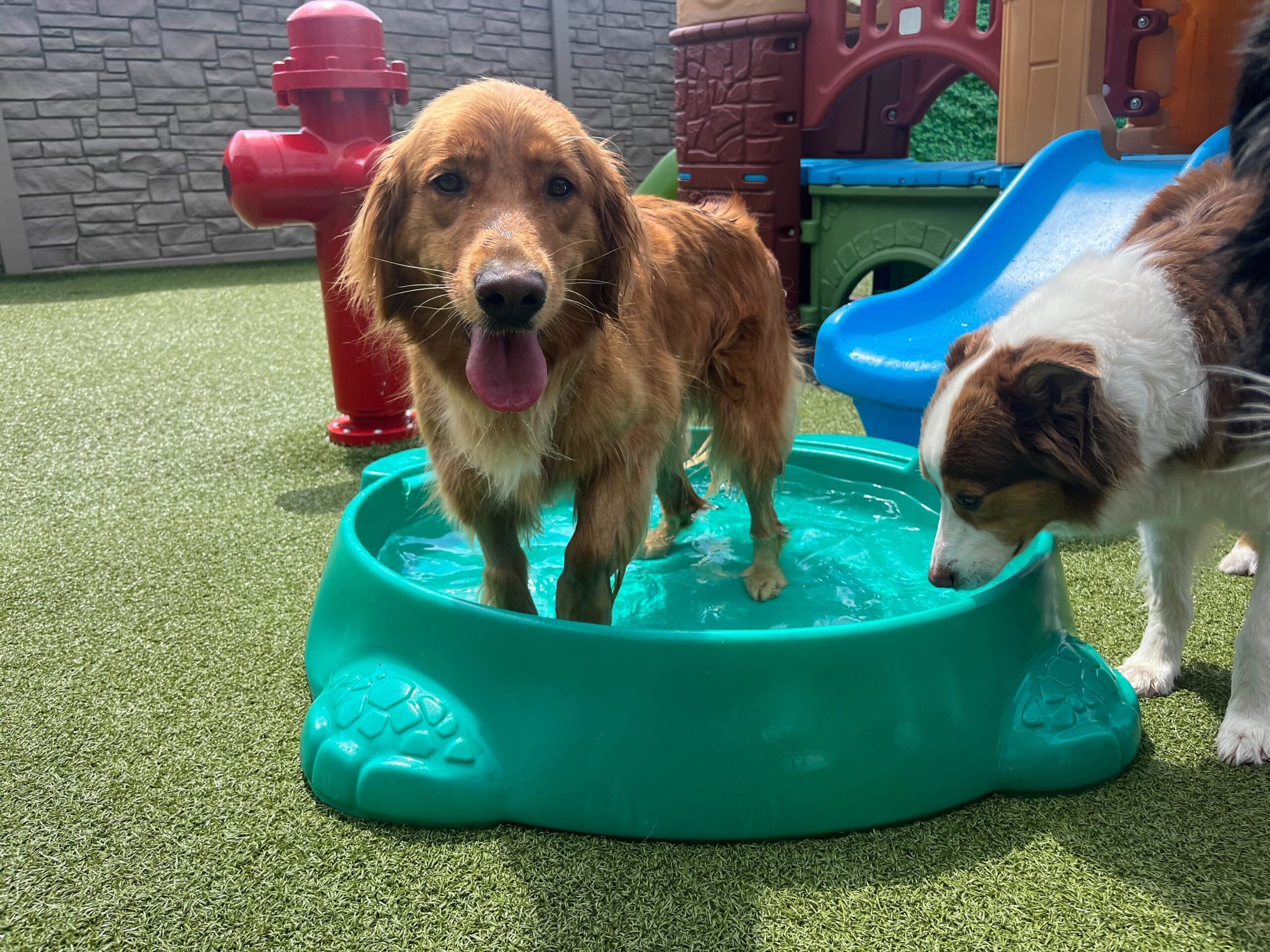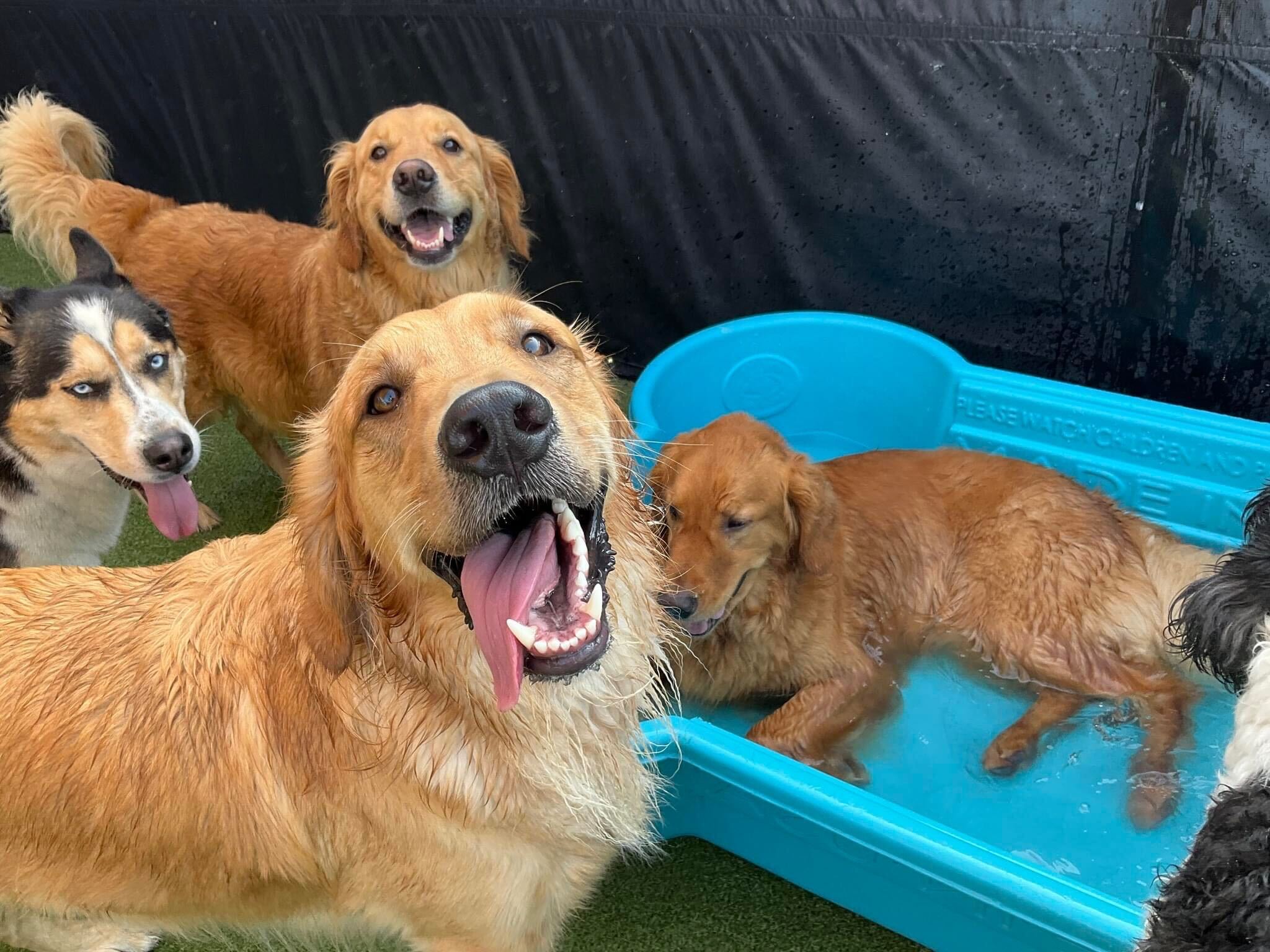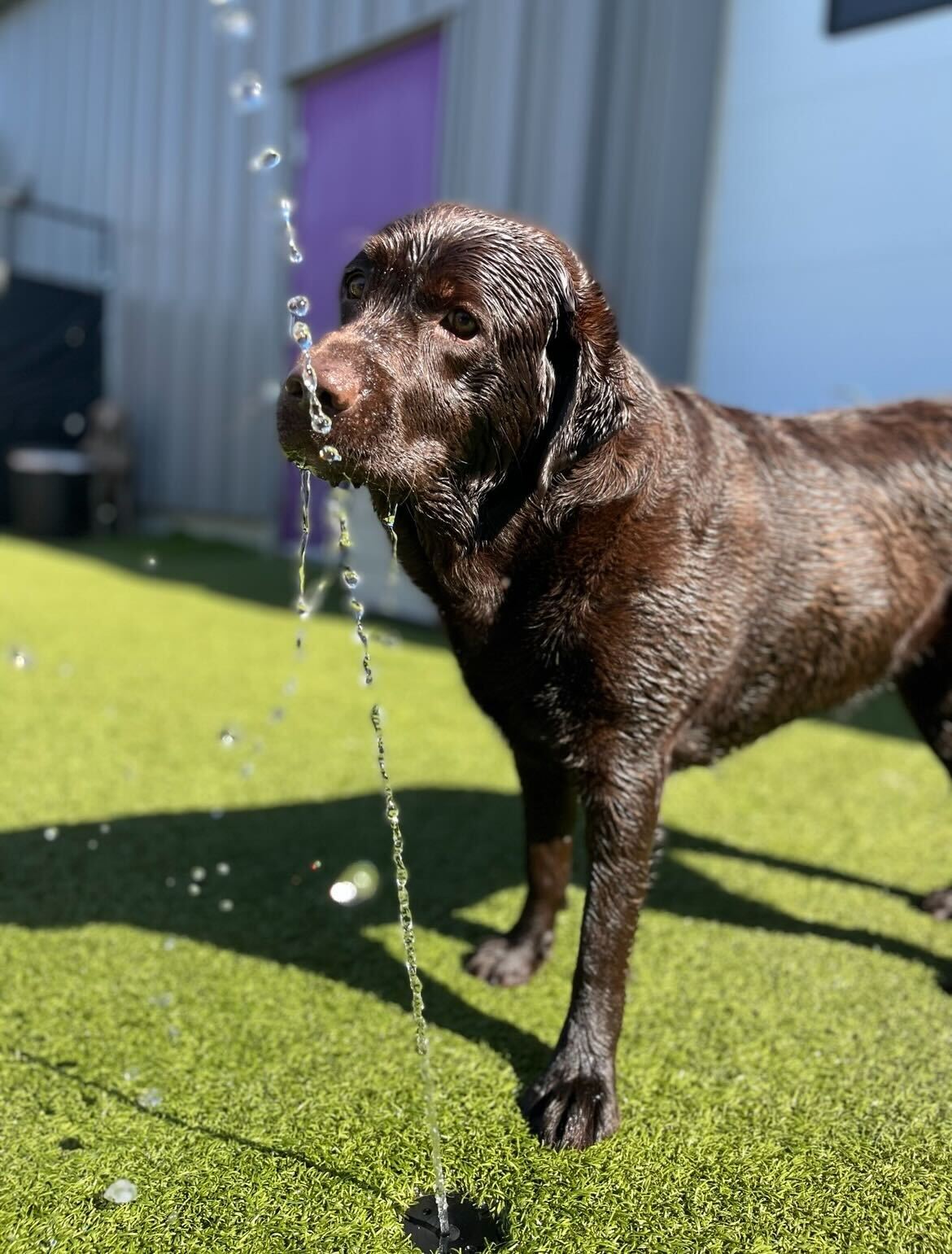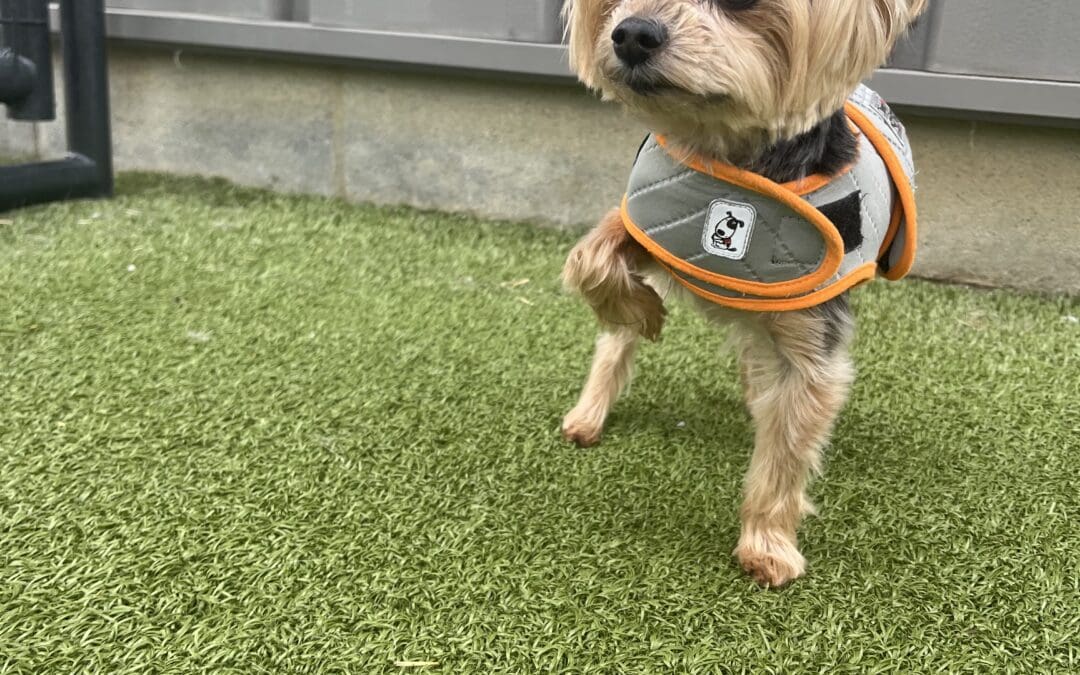
Heat-Related Dog Injuries
Most of us look forward to summertime to get outside and enjoy the sunshine and warmth it brings. However, as temperatures rise, so does your pet’s risk for heat-related injuries, including dehydration, heat exhaustion, heat stroke, and paw pad burns. Understanding the dangers and signs of heat-related injuries will help keep your pet safe this summer.
As temperatures increase, so does the risk of dehydration. Always make sure your dog has access to fresh, clean water, especially when active outdoors. The most common symptom of dehydration is the loss of elasticity in the skin (When pinched lightly, the skin ‘tents’ instead of quickly returning to its usual place). Another symptom is the gums lose moistness and become dry and sticky, and the saliva becomes thick. In advanced dehydration, the eyes sink in, and the dog may collapse with shock. For a dog with continuous bouts of vomiting and diarrhea, you can prevent dehydration by giving the dog electrolytic solutions (i.e., Gatorade or Pedialyte). If the dog is suffering from severe dehydration or you are in doubt, seek immediate medical attention for possible intravenous fluids.

While all dogs are at risk for overheating, some breeds are more prone to it than others, including dogs with thick coats/long hair, very young or older dogs, brachycephalic breeds (i.e., short noses and flat faces, such as shih tzus, pugs, boxers and bulldogs), dogs that are overweight, and dogs with medical conditions.
Heat exhaustion is a precursor to heat stroke. In heat exhaustion, your dog’s body temperature is elevated. Symptoms of heat exhaustion include excessive panting, drooling, increased heart rate, and bright red tongue and gums. If left untreated, it could lead to heat stroke.
Heat stroke can be fatal in all dogs. To prevent heat stroke, immediately move your dog to a cooler area, either indoors where there is air conditioning or in the shade or by a fan. Use a rectal thermometer to determine your dog’s body temperature. A dog’s normal body temperature is higher than in humans and runs between 101 to 102.5 rectally. Heat exhaustion occurs at 103 to 106 degrees Fahrenheit, whereas heat stroke occurs at 106 degrees or higher. It is imperative to treat for heat exhaustion at first signs to prevent it from progressing into heat stroke.
Symptoms of heat stroke include heavy panting or difficulty breathing, excessive thick mucus drool, and lethargy. Your dog may become uncoordinated, collapse or even have a seizure. Vomiting is also a common sign seen with heat stroke.
If you suspect heat exhaustion in your dog, it is essential to cool them down immediately. Move them to the shade or inside as soon as you can. You can put the dog in a shallow pool or bath with cool water. Taking a towel and soaking it in cool water, and wrapping it around your dog is another option. If using a towel, refresh with cool water frequently to avoid trapping the heat in the dog. Additional cooling measures Include putting cool packs on the neck, armpits, between hind legs, ears, and paws. If conscious, give your pet fresh cool water.
Contrary to common thought, ice cold baths and ice cubes can be dangerous as they could further exacerbate their condition by trying to cool them down too quickly. When ice is applied, the blood vessels under the pet’s skin vasoconstrict, not allowing the body to cool how it needs to. If heat stroke occurs, immediately cool the pet and get to a veterinarian, as it is considered a life-or-death emergency.
Another summertime danger many pet owners don’t consider is the effect of hot asphalt and pavement on paw pads. When air temperatures rise, so does the temperature of asphalt/pavement, which can burn the pads of their paws. Signs of burned dog pads include rough/dry paw pads, excessive licking and chewing of their feet, darkened coloration or deep redness of paw pads, missing skin on the pads or missing pieces of the paw pad, limping, refusal to walk, or even blisters. Mild burns usually heal with minimal treatment. Steps to treat a mild burn at home include putting the dog’s feet in cooler but not icy water and patting them dry. You may consider disinfecting the pads with a dog friendly disinfectant that can be purchased at most pet stores. Bacitracin can be safely used but do not use large amounts of Neosporin as it has been associated with hearing loss in dogs. If possible, cover their feet with bandages or socks to help protect them while they heal. If your pet has blisters, or a breach of the integrity of the paw pad (cracks, blisters, or missing pieces), you should seek veterinary care.

Try not to walk your dog during the hottest part of the day or shorten the time they are out walking. Keep to the shade and grass as much as possible. A way to test the temperature of the asphalt is to touch the back of your hand to the asphalt for 7 seconds. If it is too hot for your hand, it is too hot for their paws. You can help protect their paws by moisturizing them with paw pad wax (sold in most pet stores) before and after their walk or play. While it may take your dog time to adjust, dog booties are another option to protect their paws. The dogs most susceptible to burns are very young dogs with tender pads and very old dogs where paw pads are cracking or splitting.
Understanding the dangers of summertime heat is the first step in protecting your pet. Awareness of the signs and symptoms of illness or injury is important, as the sooner treatment is rendered, the better your pet’s outcome and health. While minor injuries can generally be treated at home, it is crucial to seek veterinary treatment for more severe injuries. When in doubt, always contact your vet first.

